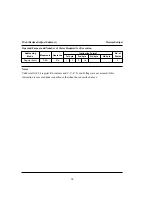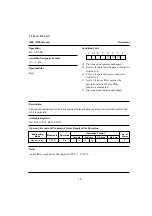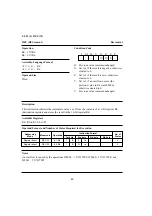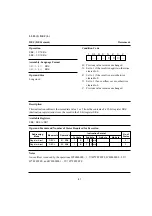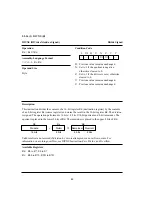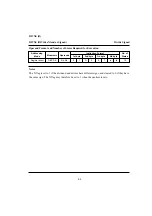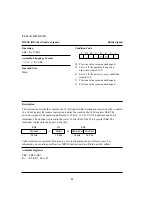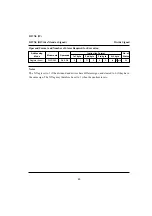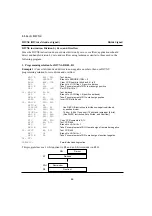
DIVXU
DIVXU (DIVide eXtend as Unsigned)
Divide
DIVXU Instruction, Zero Divide, and Overflow
Zero divide and overflow are not detected in the DIVXU instruction. A program like the following
can detect zero divisors and avoid overflow.
1. Programming solutions for DIVXU.B R0L, R1
Example 1: Divide upper 8 bits and lower 8 bits of 16-bit dividend separately and obtain 16-bit
quotient
CMP.B
#0, R0L
; R0L = 0? (Zero divisor?)
BEQ
ZERODIV
; Branch to ZERODIV if R0L = 0
MOV.B
R1H,R2L
;
Copy upper 8 bits of dividend to R2L and
EXTU.W
R2
(*1)
.
;
zero-extend to 16 bits
DIVXU.B
R0L, R2
(*2)
; Divide upper 8 bits of dividend
MOV.B
R2H, R1H
(*3)
; R2H
→
R1H (store partial remainder in R1H)
DIVXU.B
R0L, R1
(*4)
; Divide lower 8 bits of dividend (including repeated division of
upper 8 bits)
MOV.B
R2L, R2H
;
Store upper part of quotient in R2H
MOV.B
R1L, R2L
(*5)
;
Store lower part of quotient in R2L
RTS
ZERODIV:
; Zero-divide handling routine
The resulting operation is 16 bits ÷ 8 bits
→
quotient (16 bits) and remainder (8 bits), and no
overflow occurs. The 16-bit quotient is stored in R2, the 8-bit remainder in R1H.
Remainder
Quotient (low)
Remainder
Quotient (low)
Quotient
R1
R2
R2
R1
R1
R1
R2
R0L
( 1)
*
( 2)
*
( 3)
*
( 4)
*
( 5)
*
Divisor
Dividend
Sign extension
Dividend (high)
Remainder (part) Quotient (high)
Remainder (part)
Dividend (low)
92

